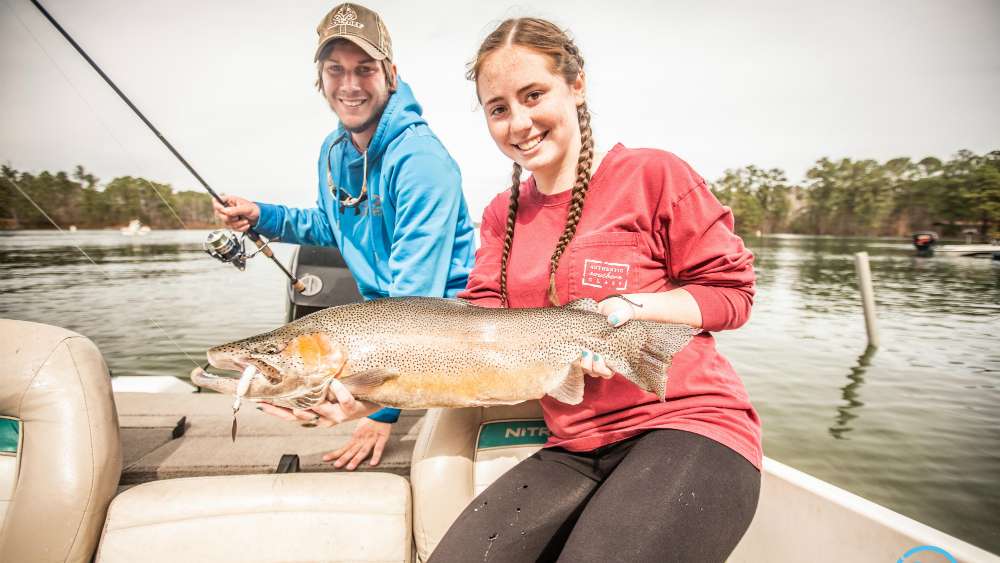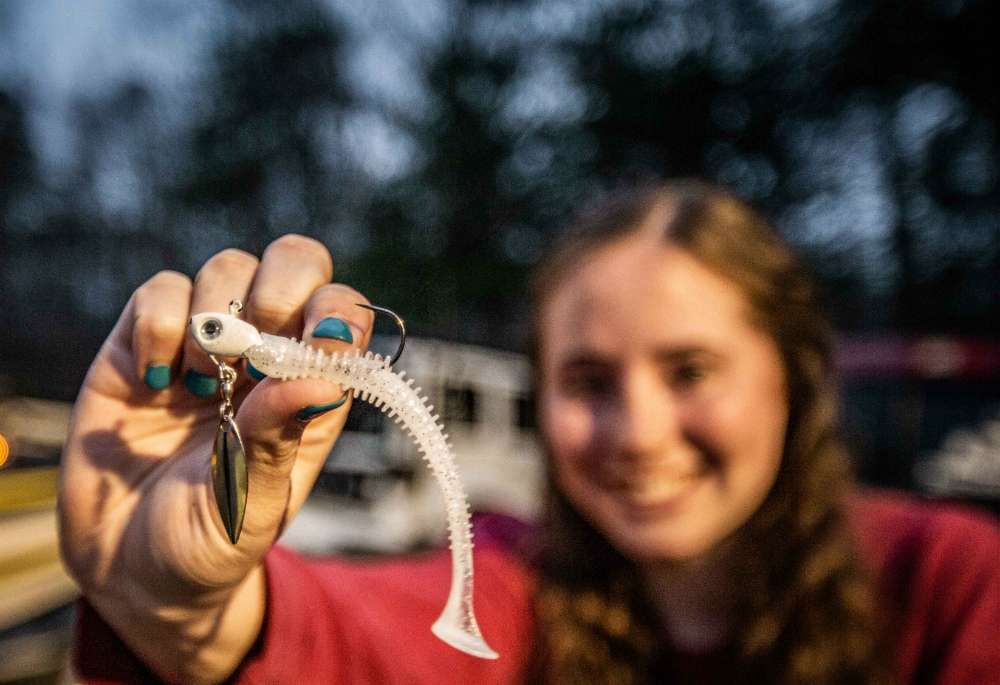
The live feed from Bassmaster.com fueled the fire for some local Georgia anglers after the Lanier Bassmaster Elite Series tournament was over. Brooke Wheeler and Landon Crofton got on the lake and followed the Zaldain tactic, fishing with light jig heads tipped with small swimbaits.
A new Lake Lanier rainbow trout record was about to be set. That may sound strange considering Lanier is known for its spotted bass fishing. Most anglers have no idea that trout even exist in the lake.
A record fish that the tournament guys were not after surfaced only a few weeks after they left.
Trout, though, have been around Lanier for a long time. Until a week ago, the lake record was held by Charlie Hobbs Sr. with an 8-pound, 5-ounce giant, caught almost 50 years ago.
Brooke Wheeler and boyfriend, Landon Crafton, were actually chasing spotted bass on Lake Lanier when this tale begins. They started the day in Shoal Creek targeting rocky points, then moved to Bald Ridge. Having no luck, they came back to where they started.
That is where Wheeler cast her underspin to a submerged brush pile in about 15 feet of water. After a few turns of her reel, she felt a thump. Wheeler let the rod load and then set the hook. The fight was not your typical spotted bass routine.
“This was the strangest fight I have ever had,” Wheeler said. “The line started screaming, which is very unusual for a spotted bass.”
As she worked the fish closer to the boat, they were expecting to see the silver side and black back associated with a striper; instead they saw a golden side with a thick hooked jaw.
During the 10-minute fight, the boat was blown by the wind on top of a sandbar. Somehow the trout managed to wrap the line around the trolling motor. The couple feared the worst; the fish would break away and all that would be left was an unbelievable fish story. As luck would have it, the fight had been so long and strenuous, the trout just floated to the top, exhausted.
Crofton managed to get the fish in the net. Unsure if it was a brown or a rainbow, Wheeler immediately started researching Lake Lanier trout records. After reviewing the information, she knew that the fish would be the next lake record.
Their number one priority at this point was to keep the fish alive and get it documented properly. It was deposited in their livewell with aerators running non-stop. When they arrived at the ramp, a local photographer was launching. He was able to take some photos for documentation.
After driving to the nearest certified scale at Hammonds Fishing Center, they sprinted to the scale for it to be weighed. The hope was to officially document the weight and release it at the nearest ramp.
“The employees at Hammonds were blown away at the size of the fish,” Wheeler said.
The nearest ramp was Charleston Park. After spending over 20 minutes in the water attempting to revive the fish, it was obvious it wouldn’t make it. The fish was put on ice and held for the Department of Natural Resources.
Brooke Wheeler now holds the lake record for having caught the largest rainbow trout on Lanier.
The fish measured 28.5 inches long and weighed 9 pounds, 6 ounces according to the DNR biologist. The fish was caught on a Buckeye Su Spin, tipped with a Keitech 4-inch sight flash swimbait, and 10 pound test line.
There is a lot to know about the procedure of how to get a fish certified. Most fishermen would have no idea where to even start to register and record this type of fish.
The first thing you need to do is record the fish with a picture at the fish catching point. Make sure your camera phone is recording with a geo-location. Do everything you can to keep the fish alive. Releasing a record would be the ultimate story. The third thing is to locate a certified scale. Sometimes your local grocery store has a registered scale as well. Make sure that you have a witness outside of the fishing party to confirm your catch and the weight.
Mounting a real fish should be a thing of the past. There is no reason to kill a trophy fish these days. As long as you record the fish’s length, girth and the weight, that should be sufficient to create an exact replica.
Everyone wants to keep a piece of history, especially if it’s a record that may never be broken.


